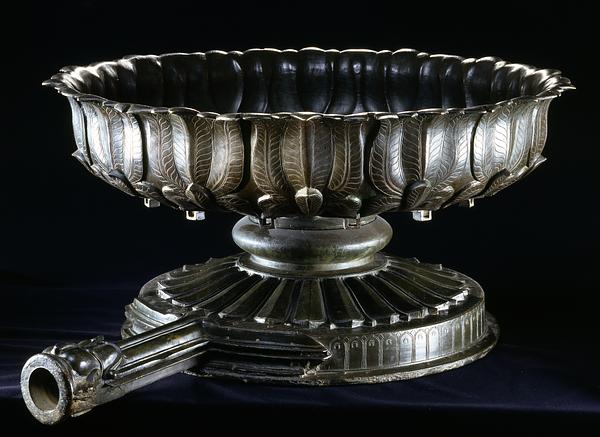Fountain, cast and engraved bronze
India, Deccan; 1st half of 17th century
H: 45; Diam: 91 cm
Most Islamic gardens – including those in India – are very formal, with geometrically organized beds, paths, and irrigation channels. Fountains might stand in strategic places. The fountains that have been preserved are often made of marble, but there must have been many made of bronze, like this one, that were melted down later for other purposes.
The fountain’s elegant form, which looks mostly like a stylized, open lotus with everted, pointed petals, is found in various forms in architecture and decorative art from the Deccan. The demon-like head that spewed water into the fountain is of Hindu origin, like many other creatures found in Indo-Islamic art.
Inv. no. 53/1998
Published in:
Kjeld von Folsach: Art from the World of Islam in The David Collection, Copenhagen 2001, cat.no. 549;
Steen Estvad Petersen: Drømmen om Paradiset: islamisk havekultur, Valby 2005, p. 347;
Kjeld von Folsach: Flora islamica: plantemotiver i islamisk kunst,Davids Samling, København 2013, cat.no. 6;
Navina Najat Haidar and Marika Sardar: Sultans of Deccan India, 1500-1700: opulence and fantasy, Metropolitan Museum of Art, New York, New Haven 2015, cat.no. 126;
Kjeld von Folsach: “Paradise on earth: water and the Islamic garden” in John Kuhlmann Madsen, Nils Overgaard Andersen and Ingolf Thuesen (eds.): Water of life: essays from a symposium held on the occasion of Peder Mortensen's 80th birthday, Copenhagen 2016, p. 193, fig. 7;
